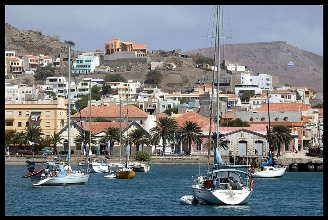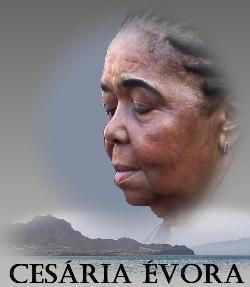Cesaria Evora
Cesaria Evora
Cesária Evora, the voice of longing, dies aged 70. The singer who brought the Portuguese-creole songs of her native Cape Verde to the world apologised to her fans for retiring earlier this year.
She is known as the country's foremost practitioner of the morna, which is strongly associated with the islands and combines West African percussion with Portuguese fados, Brazilian modhinas, and British sea shanties. Nicknamed the "Barefoot Diva"because of her propensity to perform without shoes.
Cesaria Evora
Evora was born on 27 August 1941 in Mindelo, São Vicente, Cape Verde. When she was seven years old her father died, and at age ten she was placed in an orphanage, as her mother could not raise all six children.

Cesaria Evora
"I started singing in the neighborhood where I lived, just with my friends...It was just to amuse ourselves," she told Rhythm Music. She began performing in various bars in Mindelo, and took up morna at age 16 after a romantic involvement with a guitarist.

Mindelo, Sao Vicente
According to Nonesuch Records, "With a voice conveying power, vulnerability and an emotional affinity for this style, Evora quickly found a niche for herself in Mindello's musical life and through committed performances gained a distinguished reputation as the 'Queen of Morna.'" Evora's frequent accompanist at the time was the well-known clarinetist Luis Morais.

Luis Morais
"In Cape Verde ... I used to sing for tourists and for the ships when they would come there'" she said in the San Francisco Bay Guardian. "That's why I always thought that maybe if I made it, people from different countries would love my music."

Cesaria Evora
Her big break came in the 1980s when she met Jose da Silva, a Frenchman originally from Cape Verde who became with her singing. Da Silva convinced Evora to go to Paris with him to record some of her music for his Lusafrica label. "Because I couldn't find anyone to help me out in Cape Verde, I had to start recording in France in 1988," she told the New York Times.

Jose da Silva
That year she recorded La Diva aux Pieds Nus, then followed with Distino di Belita in 1990, and Mar Azul in 1991. Her 1992 album, Miss Perfumado, made her a major star in France and Portugal, and sold over 200,000 copies in France alone. This recording featured two of her most popular songs, "Sodade" and "Angola."

Cesaria Evora
Her international fame grew, and she toured Europe, Africa, Brazil, and Canada, with stops in the United States to perform for Cape Verdean audiences. In the fall of 1995, she mounted her first large-scale American tour. Her 1995 album, Cesária, was released in more than a dozen countries and brought Evora her first Grammy nomination. She later won the "Best World Music Album" Grammy in 2004 for her album Voz D'Amor.

Cesaria Evora
Evora was best known for singing songs of longing, and her style brought comparisons to the American jazz singer Billie Holiday. Her music is Coladeras and Mornas, European sounding styles whose roots date back to the 1800s, when Cape Verde's port was an important halfway station for Atlantic trading. Musical influences have dribbled in from all corners of the globe, but the most dominant are those of the former colonials Portugal, Angola and Brazil.

Cesaria Evora
Most of Evora's albums have one or more morna songs written by her uncle, the well-known morna composer Francisco Xavier da Cruz. For a number of years her main performance venue has been The Piano Bar of Mindello on Sao Vicente where she lives. In 2006 Evora released Rogamar, much of which was recorded in her hometown of Mindelo. In 2008 Cesaria Evora suffered from a stroke during her Australian tour, but she managed to come back as an artist with her albume Nha Sentimento from 2009.

Francisco Xavier da Cruz
A heavy drinker and smoker, her health began to decline in later life and she was diagnosed with heart problems in 2005. In 2010, Evora performed a series of concerts, the last of which was in Lisbon on 8 May. Two days later, after a heart attack, she was operated on at a hospital in Paris.

Cesaria Evora
In September, she spoke of her sadness at having to retire, saying: "I have no strength, no energy. I want you to say to my fans: forgive me, but now I need to rest. I infinitely regret having to stop because of illness, I would have wanted to give more pleasure to those who have followed me for so long."

Cesaria Evora
On 17 December 2011, aged 70, Évora died in São Vicente, Cape Verde from cardiorespiratory insufficiency and hypertension.

Mindelo, Sao Vicente
Last Updated (Saturday, 21 March 2015 15:29)








